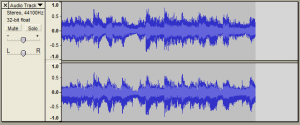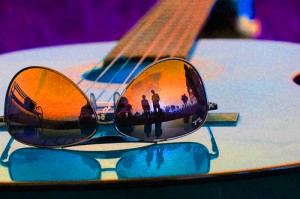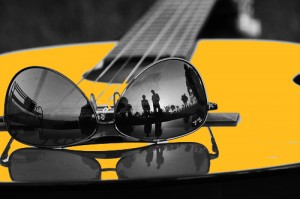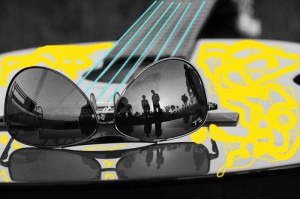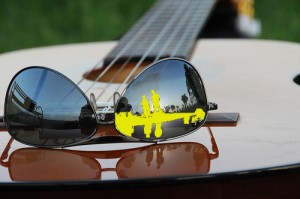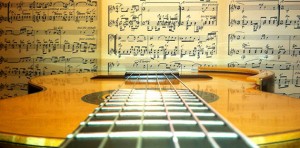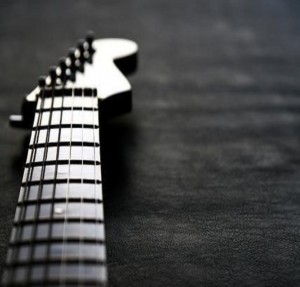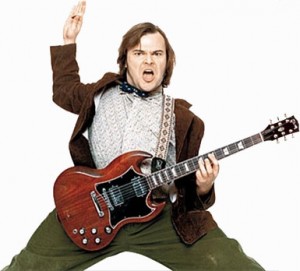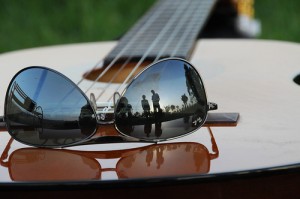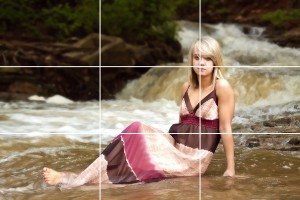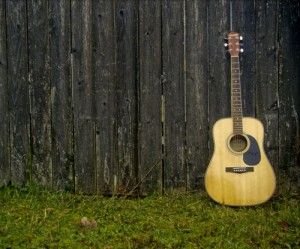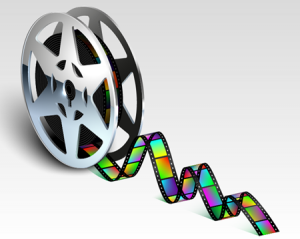
“Human responses to color are not purely visual responses; they are also psychological or even physiological” TAOWF
This means that when you see a certain color, it not only affects your eyes but your mind and your entire body. “Decorating restaurants in red apparently stimulates the appetite and results in increased food consumption. Blue surroundings can significantly lower human blood pressure, pulse and respiration rates. And violent children relax, become calm, and often fall asleep in a small room painted bubble-gum pink.” TAOWF
Colors often have different meanings in various cultures. In western cultures, a bride typically wears white on her wedding day. In medieval times, she would wear green. Can you guess what those two colors represent?
When the movie industry began, movies could only be filmed in black and white. In the early 1900s some black and white movies were hand painted in color, frame by frame. This process was extremely tedious and expensive!
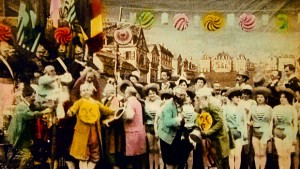
A Trip to the Moon by George Méliès 1902
The next step in color film was the process of tinting, coloring the film stock before the image was printed on it. This produced two colors, black, and whatever color was used to tint the film. This process was popular during the silent era, with specific colors employed for certain story lines.
The Diabolical Church Window by George Méliès 1910
By the 1920s, cameras had been invented that could capture color. However, it was 30% more expensive than filming in black and white, and the color quality was poor, specifically caucasian skin tone, which appeared bright pink or orange.
The most successful early color movies were Gone with the Wind and The Wizard of Oz, both released in 1939 in technicolor.
Today we take color film for granted, it is the norm. Color is one of the elements of a movie, and filmmakers routinely manipulate it for a purpose. The color in a film can be controlled through film choice, filters, lighting, costumes, make-up backgrounds, and sets.
Some ways that color is used:
Color Attracts Attention. By using bright or saturated colors on the object of greatest interest and placing that object against a contrasting background, the director can easily capture the viewers eye.
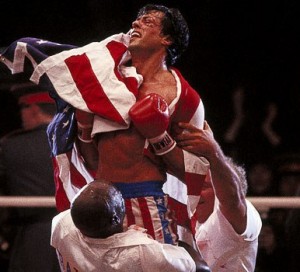
A saturated red is a great attention getter, used here in Rocky IV
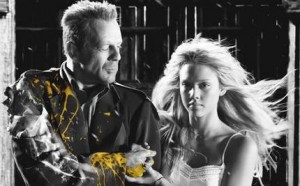
Sin City was shot in black and white, but at crucial moments, splashes of color add dramatic intensity.
Color as a Transitional Device. Color is often used to signal important changes. This can be accomplished by using color in conjunction with black and white or by switching to an obviously different color emphasis or style at the point of transition. In The Wizard of Oz, the dull, drab Kansas of Dorothy’s real world suddenly becomes the glowing Technicolor Oz of her dream.
Here is a Movie Barcode of The Wizard of Oz. Movie Barcode compresses every frame of a movie into a single image. Notice the Transition from the Beginning of the Film, which is Sepia-Toned, to the Technicolor World of Oz.
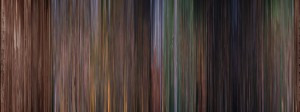
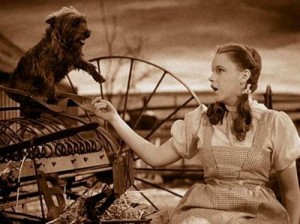
Kansas
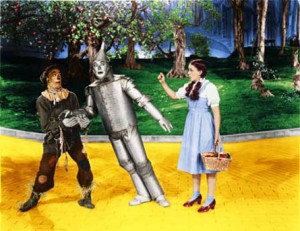
Oz
In The Matrix, the Wachowski brothers use color to help the audience understand the complex narrative. Scenes with a green tint indicate that the characters are inside The Matrix, while scenes with a blue tone show the characters inhabiting the real world.
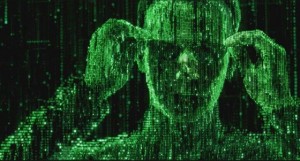
Neo inside of the Matrix
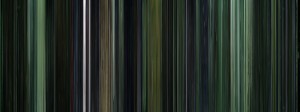
The Matrix Barcode
Color to denote different storylines, time periods. Many movies tell stories which jump back and forth in time. Color can help navigate the audience through theses different places/time periods. In the movie Hero, five colors are used as a symbol for five different story lines. Can you tell me what the colors are?
Colors can also be used to show temperatures, emotions, personality traits, symbolism etc…
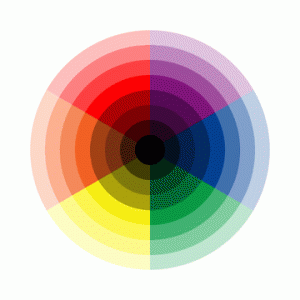
Colors work together in different ways. Certain color combinations produce predictable and consistent visual effects. Monochromatic harmony results from a scheme based on different tints and shades of one color. Great Expectations, directed by Alfonso Cuarón has a monchromatic scheme. What color is it?
Complementary harmony results from the use of colors directly opposite each other on the color wheel. These colors POP against eachother.
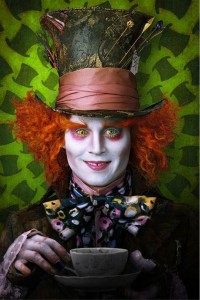
Tim Burton’s Mad Hatter character played by Johnny Depp uses a complimentary color scheme: red hair pops against the green background.
Graphic Designer Beth Mathews created the Wes Anderson Film color Palette.
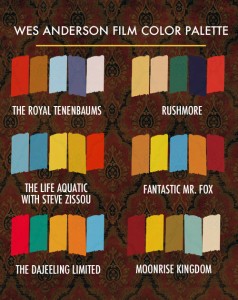
Lets focus on the palette for The Life Aquatic. Note the shades of blue, yellow and orange. Now let’s watch the trailer for that movie. Do you see how purposeful Anderson is with his colors? Where do you see them?
Now that you have learned some about color, I want you to think about your digital story. Choose, one, two, or three colors for the color palette of your movie. You have already completed the Object Story Post, so hopefully you have thought a little about the mood of your movie. Is it a funny story? Sad, Scary, nostalgic? What colors could you use to convey that mood?
Here is a some resources focusing on ideas typically associated with different colors that may help you:
Color Psychology
The Meaning of Colors
Color: Meaning, Symbolism and Psychology
Once you have picked your color/colors, make a palette like Beth Mathews did using photoshop. Create a new post entitled Digital Story Color Palette and post the palette image, along with the reasons that you chose to focus on those colors.
Here is a blank template to use for your color palette. Click on it and save it!
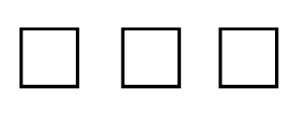
Here is my Example:
Digital Story Color Palette
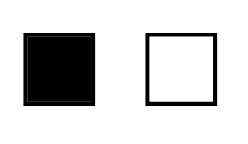
For my digital story, I will focus on the colors black and white. The reason I am doing so is that my movie is about opposing forces in the universe, illustrated by my little black and white cats. Black typically could represent evil, while white could represent good. In the eastern philosophy of the yin yang, yin is black and yang is white. Yin (WHITE) is slow, soft, yielding, diffuse, cold, wet, and passive; and is associated with water, earth, the moon, femininity and nighttime. Yang (BLACK), is fast, hard, solid, focused, hot, dry, and aggressive; and is associated with fire, sky, the sun, masculinity and daytime. I think it makes sense to do my movie in black and white.
*Most information in this post was taken from The Art of Watching Films by Joesph M. Boggs and Dennis W. Petrie
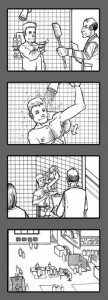
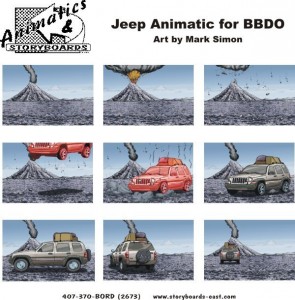
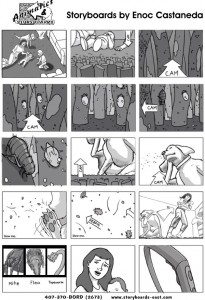
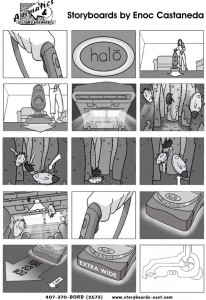
 at the dinner table would, perhaps, be recorded from the living room.
at the dinner table would, perhaps, be recorded from the living room. lmic space. A master shot would probably be recorded from the same position, with the same
lmic space. A master shot would probably be recorded from the same position, with the same 
 sically and psychologically. They carry less emotional weight, and therefore they are not the best choice during emotive scenes.
sically and psychologically. They carry less emotional weight, and therefore they are not the best choice during emotive scenes. s disagree on the definition. While some writers declare that the medium shot shows the character from a little above the knees to the top of his head, others state that medium shots only go as low as a little above the waist. Regardless of the debate, general
s disagree on the definition. While some writers declare that the medium shot shows the character from a little above the knees to the top of his head, others state that medium shots only go as low as a little above the waist. Regardless of the debate, general 



